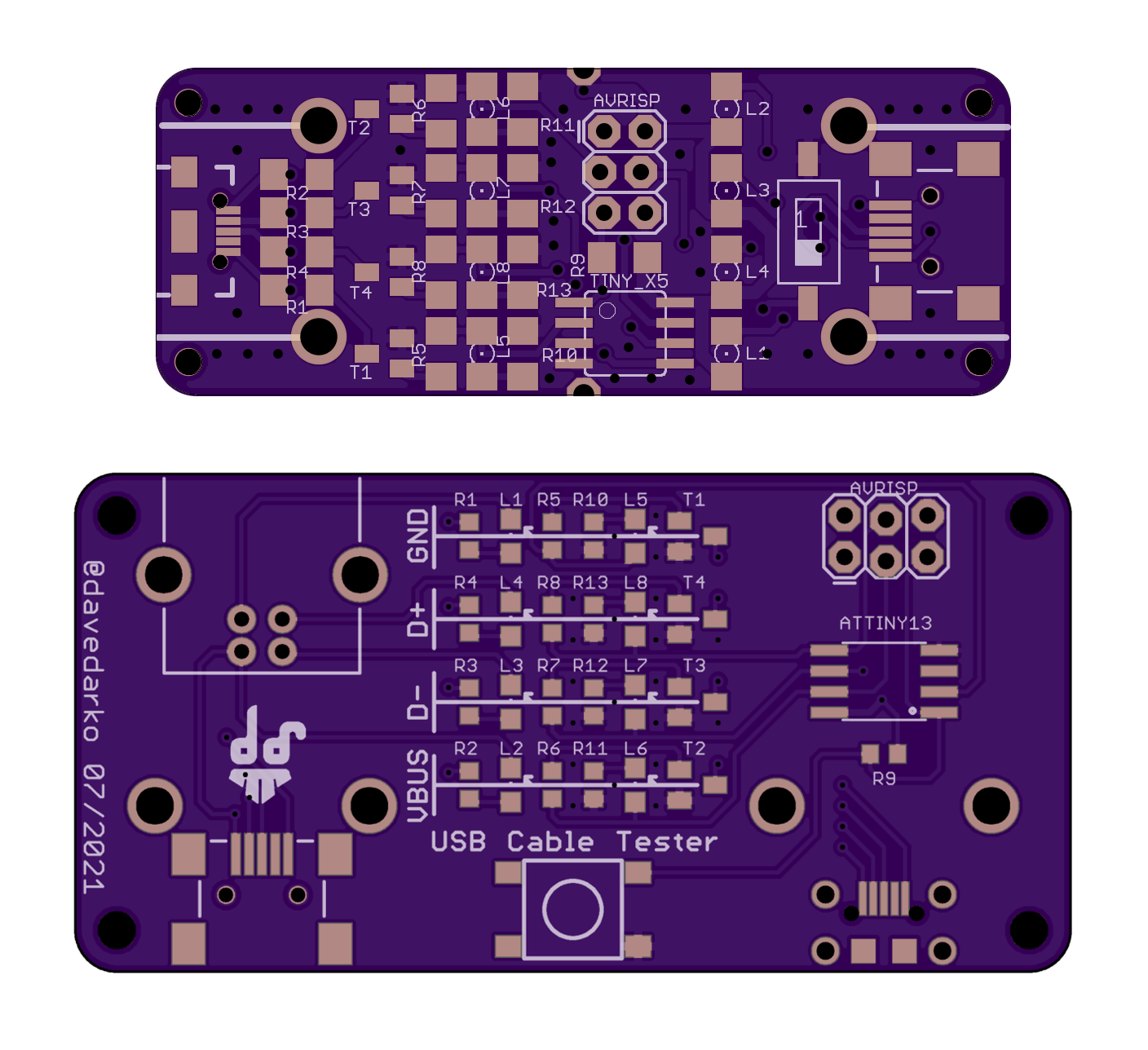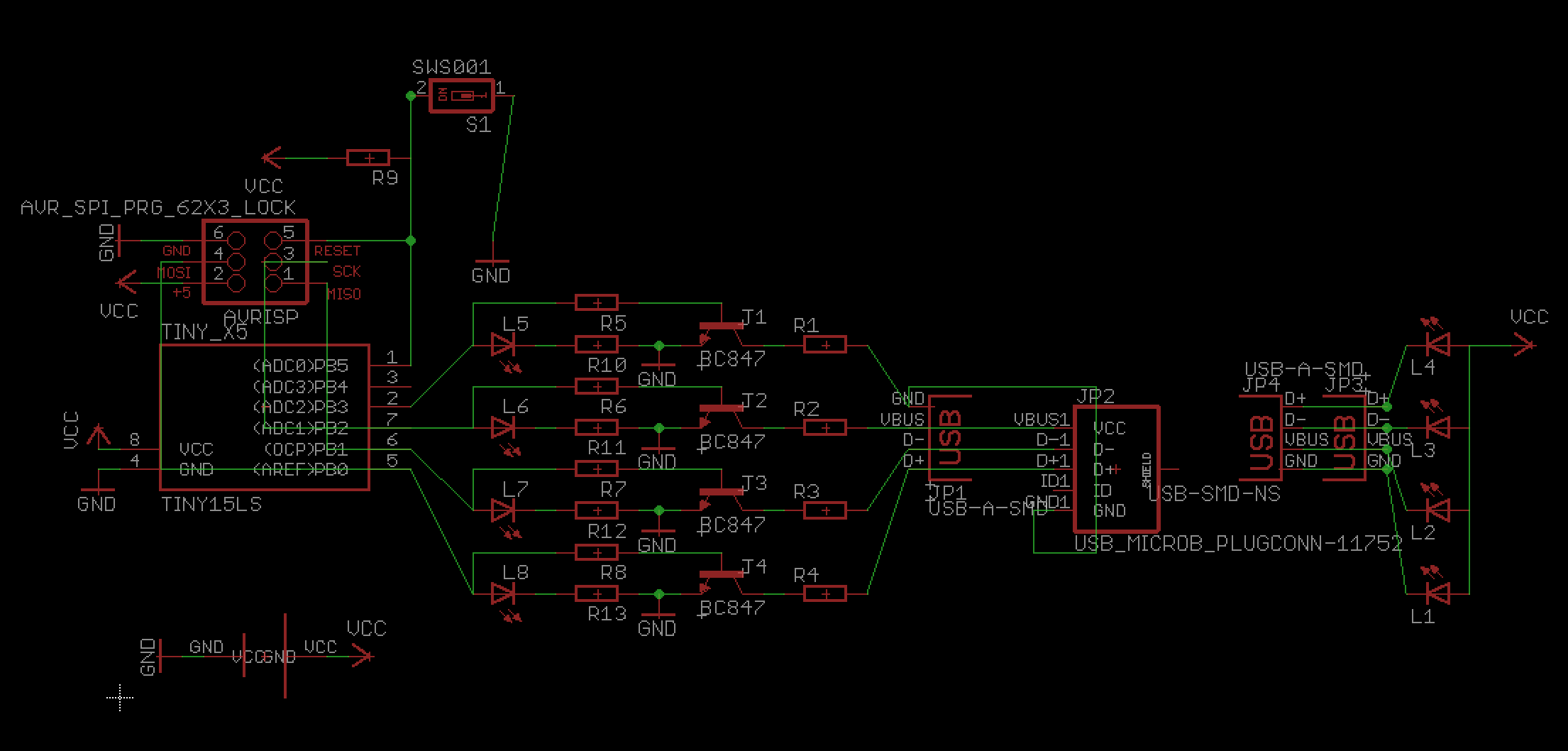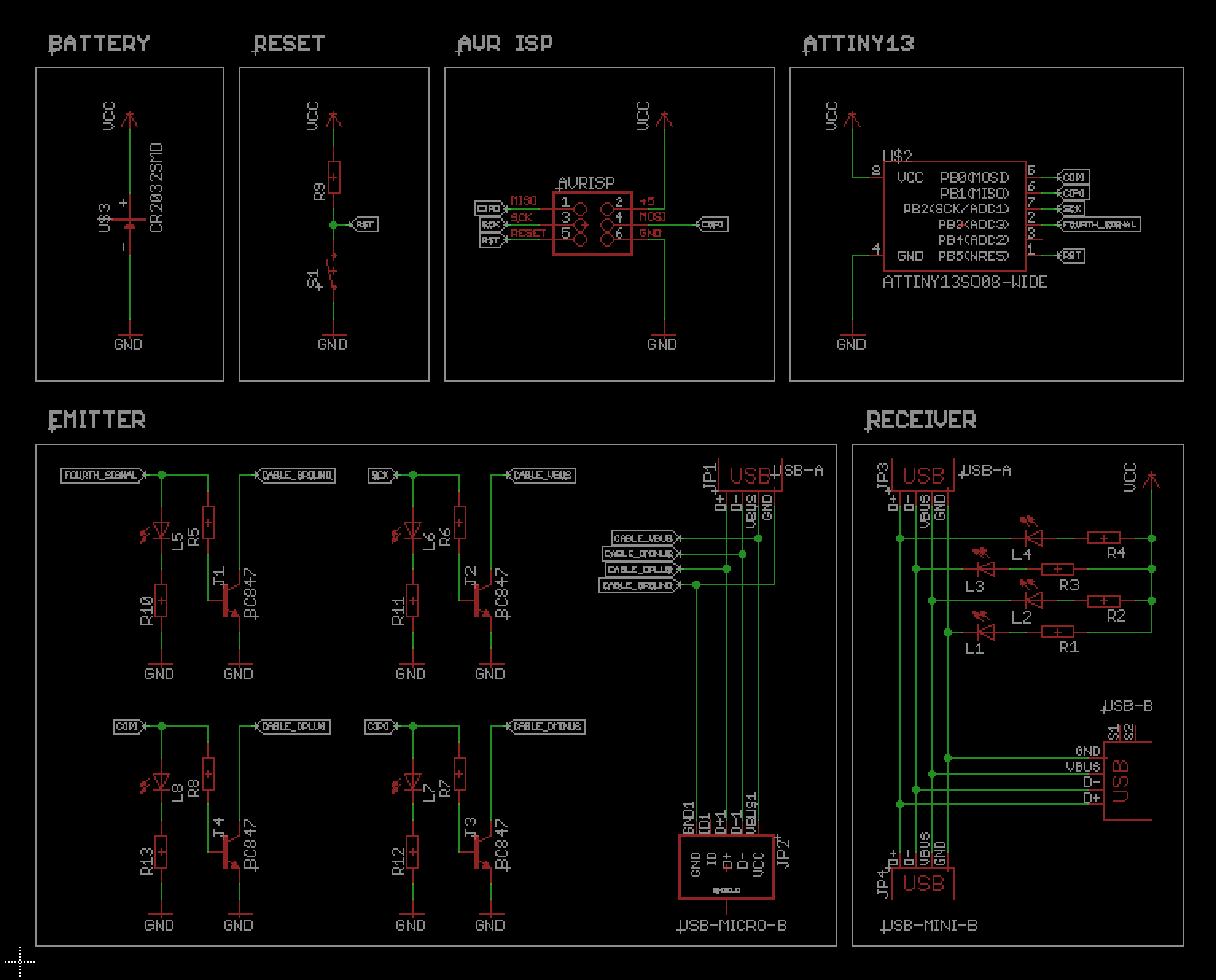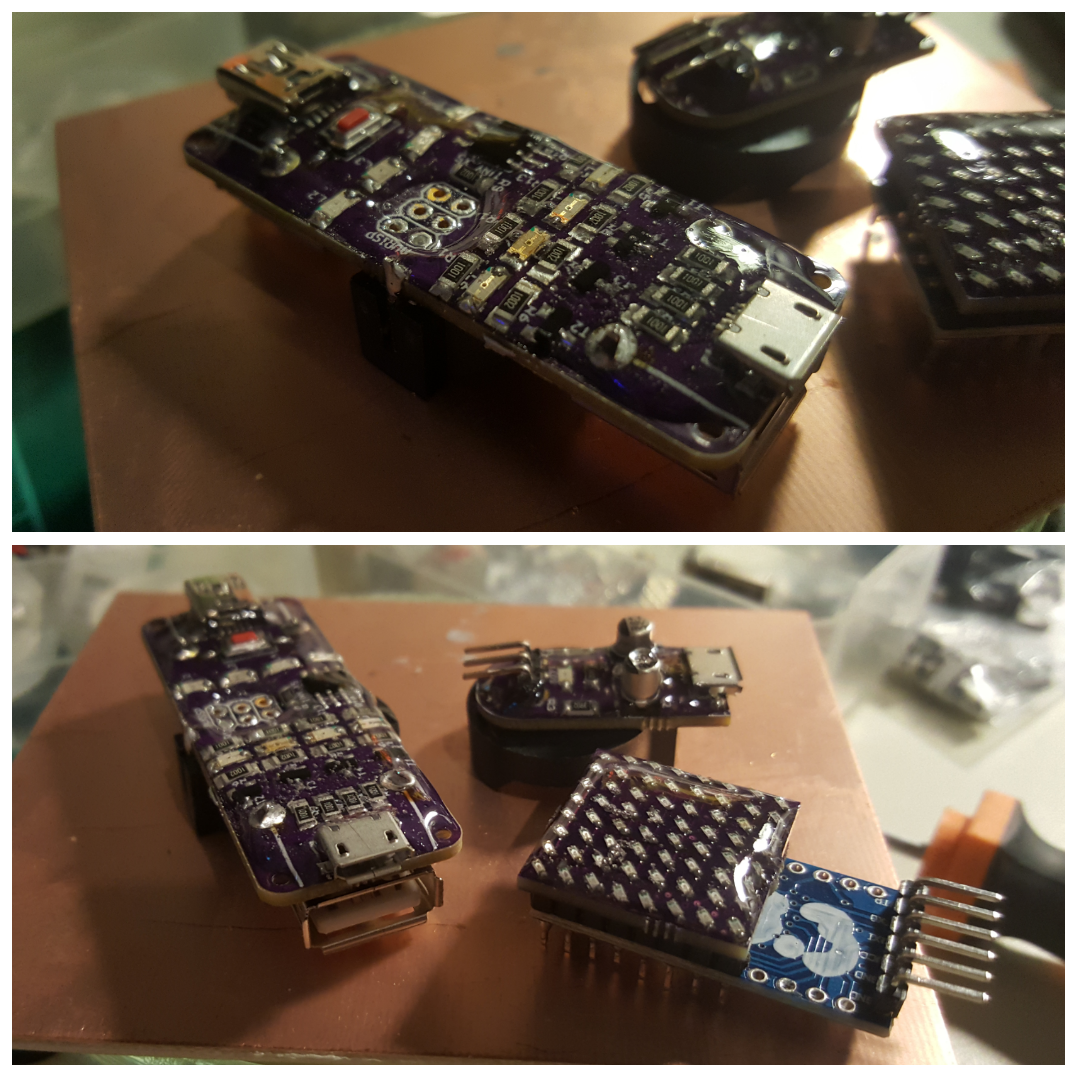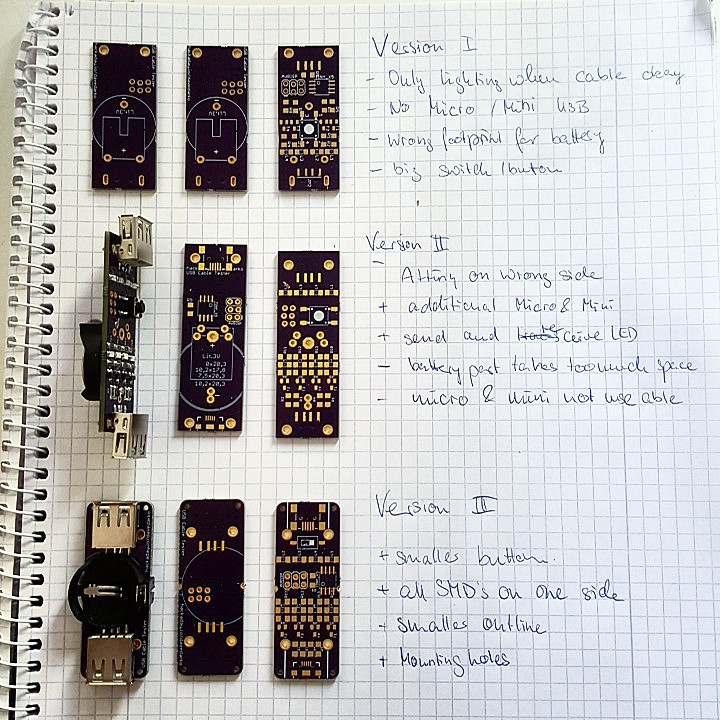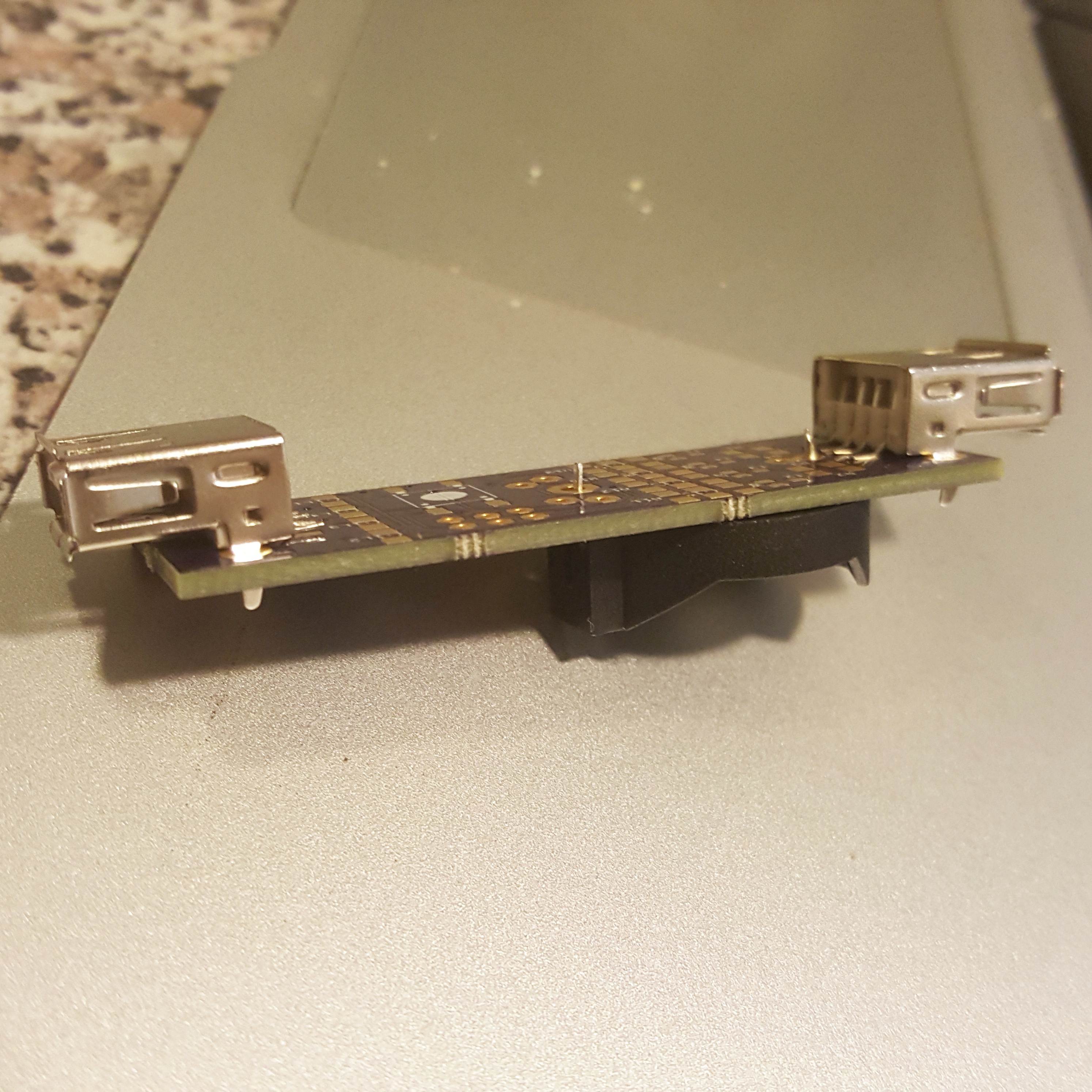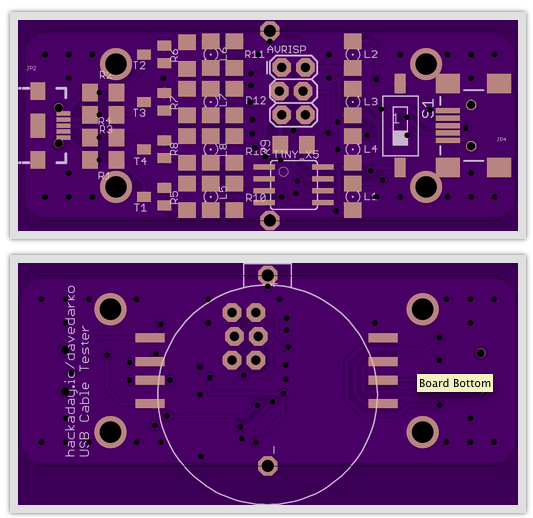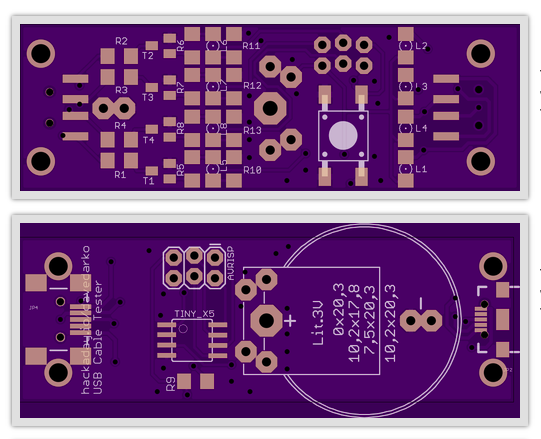-
New Revision
07/18/2021 at 22:35 • 0 comments![]()
Today I went sorting through some USB cables, but before I could test anything, I had to solder the third and last of the boards that I had ordered years ago. The micro-B USB socket held for 15 cables before I had to add glue because it got loose [log for board 2]. So I decided to update some parts on the PCB and shift things around.
- USB-A + micro/mini Sockets are turned 90 degrees, so you can test shorter cables
- additional USB-B connector so you can test A-B cables
- button is now a 6mm x 6mm sized one
- LEDs all point in the same direction and are marked, good for soldering
- Attiny13 was chosen as the firmware size is sub 1kB [[1kB challenge contest]]
- swapped to SMD coin cell holder
- changed micro-B footprint for something with 4 prongs
Check out this old space ship of a schematic:
![]()
And here is the (hopefully improved) new schematics, I think it's more readible, but not everyone is a fan of too many labels.
![]()
There's still one pin left on the Attiny, anyone any ideas for it?
-
yay :)
08/26/2017 at 05:59 • 0 commentsso cool to see one in the wild!
Thanks for the design @davedarko, usb tester working great :) pic.twitter.com/pB77roC5kp
— bitrunnr 👁️ (@bitrunnr) 26. August 2017 -
Board 2 is running
12/06/2016 at 08:16 • 4 commentsSince the USB micro connector broke off of the first board I had to solder one again. Still have to check if the consumption still is that low and all the code really works as intended.
Also - Resin / 2K epoxy!
![]()
-
uh wait, that fits the 1kB contest
12/04/2016 at 13:08 • 0 commentsnoice! It compiles with arduino! https://hackaday.io/project/6858-usb-cable-tester/log/24876-verify-your-results
I will test the circuit when I get home! I'm glad I just went through my projects list and that there's a USB port broken. yeah!
-
woohoo
03/16/2016 at 16:06 • 0 commentsYay, this project got featured on the OSHPark blog :)
-
Mark III boards are in
09/24/2015 at 10:17 • 0 comments![]()
I'll try to toaster oven solder them in the near future.
-
verify your results
09/09/2015 at 07:38 • 0 commentsSo the code from last time didn't work at all, when I woke up the blue LEDs where totally dim. I've check the datasheet for the attiny45 and noticed once again - what works on an arduino must not work on a board using non-atmega328s. I hooked up my new UNI-T UT61E and measured 200uA - not the 0.1uA I've expected to see. With the help of the gist from JChristensen I verified (read copied) my code for the power down and measured a success - yes it's measurable - 0.1uA !
/* Things to safe power, according to datasheet: - turn off adc (not needed for LEDs) - turn off brown out detection (BOD) - turn off analog comparator - turn off internal voltage reference - turn off watchdog timer - disable port pins per register With the help of JChristensen/AVR Sleep https://gist.github.com/JChristensen/5616922 */ #include <avr/sleep.h> #define BODS 7 //BOD Sleep bit in MCUCR #define BODSE 2 //BOD Sleep enable bit in MCUCR int leds[] = {4,0,1,2}; void setup() { for (int i=0; i<4; i++) { pinMode(leds[i], OUTPUT); digitalWrite(leds[i], HIGH); delay(200); digitalWrite(leds[i], LOW); delay(200); } die_until_reset(); } void loop() { } void die_until_reset() { byte mcucr1, mcucr2; set_sleep_mode(SLEEP_MODE_PWR_DOWN); sleep_enable(); MCUCR &= ~(_BV(ISC01) | _BV(ISC00)); //INT0 on low level ADCSRA &= ~_BV(ADEN); //disable ADC cli(); //stop interrupts to ensure the BOD timed sequence executes as required mcucr1 = MCUCR | _BV(BODS) | _BV(BODSE); //turn off the brown-out detector mcucr2 = mcucr1 & ~_BV(BODSE); //if the MCU does not have BOD disable capability, MCUCR = mcucr1; // this code has no effect MCUCR = mcucr2; sleep_cpu(); } -
code and me whining and winning
09/08/2015 at 20:21 • 5 commentsUsing the attiny15 footprint/part in eagle from the atmel library for the attiny45 is not right, because B4 and B3 are reversed and it's not the first time I noticed that. But this time I just went in and changed the part in the library. Muahaha. Evil, I know. PCB is updated (again), "code" is here:
#include <avr/sleep.h> int leds[] = {0,1,2,4}; void setup() { for (int i=0; i<4; i++) { pinMode(leds[i], OUTPUT); digitalWrite(leds[i], HIGH); delay(200); digitalWrite(leds[i], LOW); delay(200); } set_sleep_mode(SLEEP_MODE_PWR_DOWN); sleep_enable(); sleep_mode(); } void loop() { } -
this project... like... so annoying
09/08/2015 at 12:10 • 3 commentsI can't believe that I will say this, but there are some really annoying things with this design. The first and most obvious: the usb connectors and the battery connector aren't on the same side! The second one is that the connectors should be plane with the pcb, so that the micro / mini port would be useable with the USB A ports soldered on. I should stop calling designs "final".
![]()
I "redesigned" the battery part for eagle and by turning it 90 degrees I was able to save some space.
![]()
[UPDATE] Seems like I have connected the wrong pin of the battery holder - I took one of those 5 holes meant for plus, but not the centered one - good thing that I've redesigned that holder.
-
final design (almost)
08/25/2015 at 19:32 • 0 commentsordered... and just saw the mistake on the silkscreen... gnargh. Anyway, don't want to neglect this project - so I ordered them.
![]()
 davedarko
davedarko